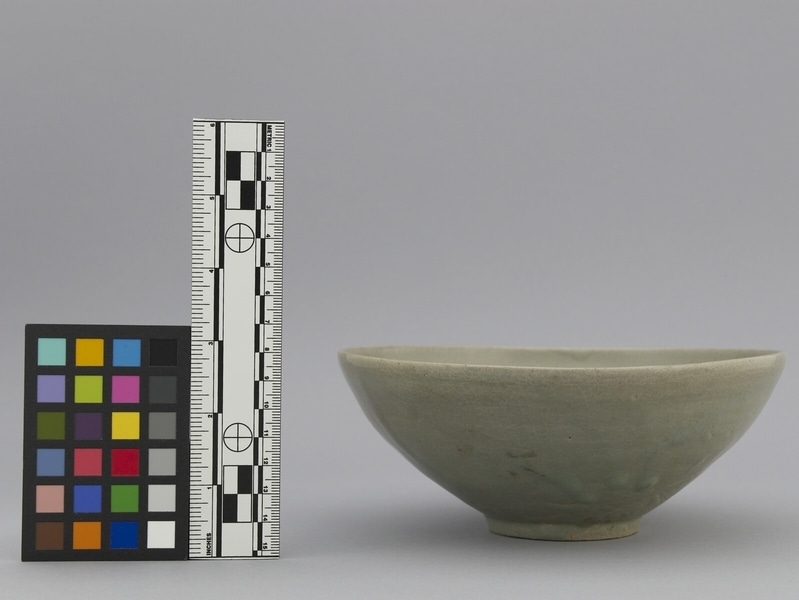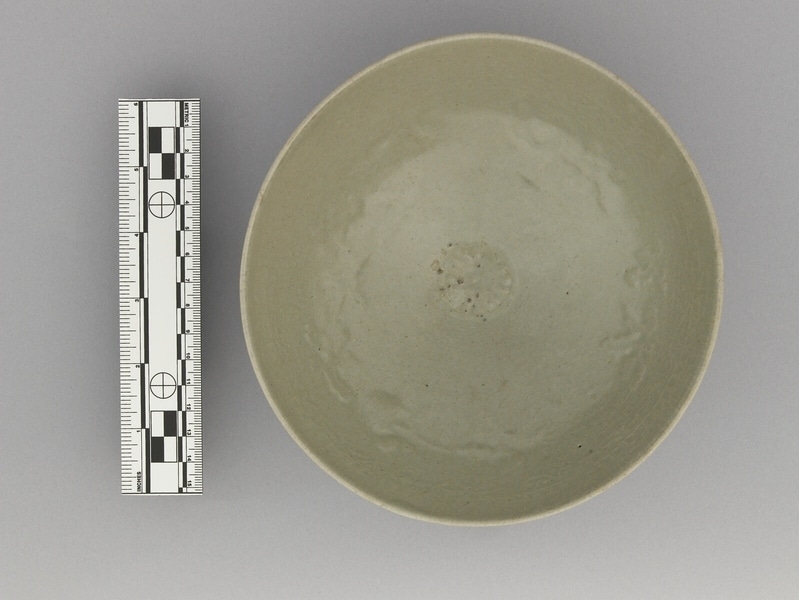Bowl Item Number: N3.95 from the MOA: University of British Columbia



Description
Celadon bowl (wan; 완; 碗). Crackled glaze. Some decoration in relief but very indistinct (figures and border?). Unmarked.
History Of Use
A wide rim ceramic bowl with a narrow bottom and inclined sides is called wan (완; 碗) in Korean. Cheongja wan (청자 완; 靑磁碗) or a wan made of celadon was commonly used for drinking tea during the Goryeo dynasty (918–1392). The shape of this bowl was particularly well-suited for drinking powdered tea, using the tea method that originated in the Tang dynasty of China. Wan was one of the main products in Goryeo celadon kilns, as many Goryeo elites enjoyed drinking tea using this type of bowl. Cheongja wans were usually produced without patterns, but sometimes had decorative patterns reflecting the tastes of noble patrons, likely intended to enhance the drinking experience. All kinds of pottery produced during the Goryeo dynasty (고려; 高麗; 918–1392) are called Goryeo dojagi (Goryeo ware; 고려도자기; 高麗陶磁器). Celadon (green-gray glazed ceramic) known as Goryeo cheongja (고려청자; 高麗青磁) was the main kind of ceramic produced during this period in Korea. Celadon originated in China, and Goryeo potters learned the techniques from the celadon traditions of the Song dynasty (960–1279). The Buan (부안군) and Gangjin (강진군) regions in Jeolla Province (전라도) became the major production centre by the mid-twentieth century; Gangjin remains the centre of Goryeo cheongja revival, and modern celadon production. Tea was introduced to Korea during the Tang dynasty (618-907) of China. During the Goryeo dynasty tea was used in royal and Buddhist ceremonies, as well as in daily practice. An establishment called a dabang (다방; 茶房) was established for serving tea. As time passed, drinking tea in daily life thrived among the royal family, nobility, monks and elites. The prevalence of tea drinking and the demand for tea utensils stimulated the development of the Korean ceramics industry, leading to the creation of various types of high-quality tea utensils, such as bowls, cups, cup stands, and ewers.
Item History
- Made in Korea between 1100 and 1300
- Owned by Tappit Hen Antiques before April 29, 1969
- Received from Tappit Hen Antiques (Seller) and Florence Fyfe-Smith (Funding source) on April 29, 1969
What
Who
- Culture
- Korean
- Previous Owner
- Tappit Hen Antiques
- Received from
- Tappit Hen Antiques (Seller) and Florence Fyfe-Smith (Funding source)
Where
- Holding Institution
- MOA: University of British Columbia
- Made in
- Korea
When
- Creation Date
- between 1100 and 1300
- Ownership Date
- before April 29, 1969
- Acquisition Date
- on April 29, 1969
Other
- Item Classes
- ceramics
- Condition
- good
- Accession Number
- 2248/0001